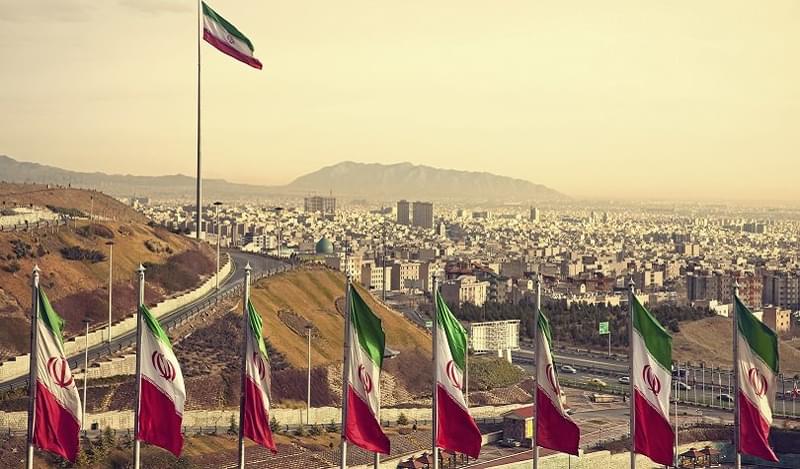Iran’s Petropars and France’s Total and China’s CNPC have reached a provisional US$4.8bn deal with the National Iranian Oil Company (NIOC) to develop Phase 11 of the South Pars gas field.
Iran’s Deputy Oil Minister also noted earlier this week that a number of Russian companies, including Gazprom, Rosneft, Lukoil, Gazpromneft, Tatneft and Zarubezhneft were also interested in developing Iranian energy reserves.
Although this is a sign that foreign investment is beginning to flow back into the country’s energy sector following the Nuclear Accords, there are other areas of the economy that could also benefit from significant foreign capital inflows.
Apart from the energy sector, the telecommunications, IT, transportation, pharmaceuticals, mining and insurance sectors are among the areas that would benefit hugely from foreign investment.
“After several years of isolation from international community, infrastructure is in need of being updated and modernised, which provides significant investment opportunities. In addition, the fact that Iran has a young and educated population means that the country’s markets offer a lot of potential for foreign investors,” said Mahdi Goodarzi, board member at Agah Group, one of the leading Iranian brokerage firms.
He added that although the economy was now on the path to recovery, much still needed to be done to further Iran’s economic comeback, which could be hastened by utilising outside assistance.
However, Iran’s capital markets do need further reform and development before any substantial foreign inflows are likely to be recorded.
Shortcomings in Iran’s markets include limited transparency for outside investors, obscure ownership structures as well as a lack of international reporting standards and corporate governance. There is also a lack of global custodian banks and international credit rating agencies.
In addition, Goodarzi noted that there are also problems with the limitations on cross-border banking transactions, foreign currency matters (although the current administration is looking to unify the FX exchange rate by the end of the year), imposing amounts of bureaucracy – which puts off investors – and finally, uncertainty over the remaining US sanctions, which prevents foreign companies from investing without the explicit agreement from the US government.
This last factor could be exacerbated by Trump’s win in the US Presidential election – during his campaign he pledged to repeal the Nuclear Accords, and has the support of a Republican Congress – which could significantly complicate future investment opportunities.
Despite this, and although the former issues remain prevalent, the Iranian government is looking to tackle them with the aim to further foreign investment. “It is worth highlighting that officials are currently working on these issues, and some solutions have been found which will be implemented very soon,” Goodarzi continued.
Furthermore, Iran’s current growth rate, and future economic potential make the country an attractive long-term investment destination.
The country’s GDP grew at a rate of 2% over Q1 2016, which accelerated to 4.4% by Q2 2016 according to official estimates. Within this, non-oil related growth recorded 2.9% growth. World Bank figures show that real GDP growth could reach 4.2% and 4.6% in 2016 and 2017 respectively. Strong growth has translated into a relatively liquid stock exchange.
Goodarzi highlighted that although daily trading volumes on the Tehran stock exchange can be volatile – having ranged from US$26mn to US$424mn this year (an annual average of US$100mn) – they are more liquid than other frontier markets such as Nigeria or Egypt.
“The size of the market and its average daily liquidity makes it hard to ignore for emerging and frontier markets investors. If Iran was part of the MSCI FM index today, it would constitute up to 15% of the index,” he said.
Interestingly, the characteristics that Iran is currently demonstrating, from negatives such as market infrastructure, reporting standards and corporate governance, to positives such as liquidity levels in the local stock exchange, are not too dissimilar to those of emerging markets such as Russia, China and Eastern European nations in the mid-1990s.
“In many instances, Iran is more advanced and better prepared for an influx of foreign investors than the Russia of the 1990s – The Iranian market is more diversified and liquid and its economy is more stable and predictable than Russia’s was back then,” Goodarzi concluded, adding that the country has all the pre-conditions for a sustained growth once it is fully open to the international investors and integrated into the world financial markets.
Indeed, considering the popularity of Russian debt amongst international investors now – despite Western sanctions and an ailing economy – Iran could emerge as an in-demand EM pick-up in the longer term.
“Given its size and potential, Iran has the potential to become the major investment opportunity of the next decade.”









